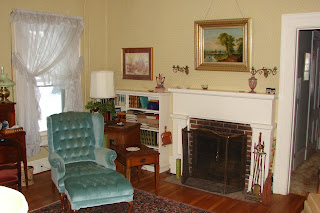Follow-up of German Builders of the Williamson Road (1792)
The question has been asked--- What happened to the German families who participated in building the Williamson Road-in 1792?
Although not directly connected to Lindley history , it is to Steuben County history. As Commentator - Paul Harvey-used to say "The rest of the story"
This information was discovered when someone in Markham researched the family history .
You never know what interesting stories you will find as you tract down ancestors.
A Little History of The Town of Markham, Ontario, Canada

William Moll Berczy, Founder of Markham
The first European settlement in Markham occurred when William Moll Berczy, a German artist and developer led a group of approximately sixty-four German families to North America. Arriving in Philadelphia in 1792, they had originally intended to settle on land in the Genessee area of New York State. ( ** As has been mentioned These families were recruited through Berczy by Colonel Williamson to build the Williamson Road from Northumberland, Penna. to Bath, N.Y. and to Geneseo, N.Y. Sections of U.S. Rt.15 through Penna. and NYS followed the former Williamson Road that these families struggled to build.)
On their arrival on their in New York, however, disputes arose over finances and land tenure and the Berczy Settlers were forced to look elsewhere. In May of 1794, Berczy negotiated with Simcoe for 64,000 acres in Markham Township, soon to be known as the German Company Lands.The Berczy settlers, joined by several Pennsylvania German families, set out for Upper Canada.Sixty-four families arrived that year and their first few years proved difficult, as a result of harsh winters and crop failures.A number of original settlers moved back to Niagara, but those who stayed managed to prosper eventually.

Union Mills on the Rouge River, built 1841, burned 1930s
Markham's early years (1794-1830) were characterised by the rigors of homesteading and the development of agricultural industries. The township's many rivers and streams soon supported water-powered saw, grist and woollen mills. Small hamlets such as German Mills, Almira, Buttonville, Cedar Grove and Unionville began to spring up at the mill sites.
The people of Markham were always politically active, and with the heated tensions between reformers and the family compact, leading up to the MacKenzie Rebellion of 1837, Markham found itself bitterly divided. Markham, as part of the riding of York, elected the rebel leader William Lyon MacKenzie as their member of the Legislative Assembly on five occasions between 1828 and 1836. He did not sit for long, however, as each time he entered the house, he was expelled for his republican views.
As a result of this and other issues, some Markham farmers risked arrest by openly supporting the rebellion of 1837 while others under Captain John Button raised armed troops of militia to quash the violence.
With improved transportation routes such as Yonge Street and the growing population, urbanisation increase. By 1857, most of the township had been cleared of timber and the land was under cultivation. Villages like Thornhill, Unionville and Markham greatly expanded and new, specialised industries such as wagon works, tanneries, farm implement manufacturers and furniture factories sprang up.

Buttonville General Store, photographed c.1900

Unionville Main Street, c.1960
Borrowed from History of Markham on the Internet with my notes in red. Kitty



Comments
Post a Comment